Cupping therapy, a practice rooted in ancient healing traditions, has resurged in popularity as a complementary treatment in modern holistic health circles. This age-old technique, which involves creating suction on the skin using cups, is believed to stimulate the flow of energy within the body, promoting healing and wellness.

Historical Significance: The practice of cupping dates back thousands of years, with evidence of its use in Egyptian, Chinese, and Middle Eastern cultures. It was traditionally used to alleviate a variety of ailments, from muscle pain and stiffness to respiratory conditions.
Modern Usage: Today, cupping therapy is utilized worldwide, often integrated into massage therapy and acupuncture treatments. Its perceived benefits have made it a sought-after therapy among athletes and those seeking alternative pain management strategies.
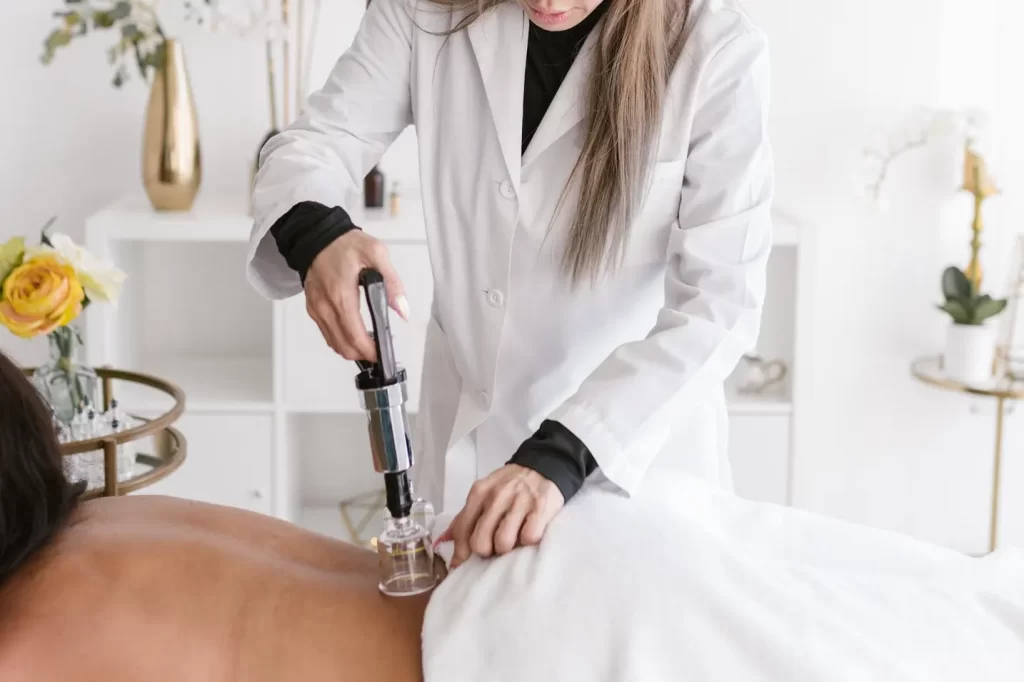
Scope of Benefits: Advocates of cupping therapy claim that it can aid in the prevention and management of various conditions. From enhancing circulation and promoting relaxation to addressing specific health concerns such as hypertension and prostate or breast diseases, cupping is seen as a versatile therapeutic intervention.
In this introductory section, the post will set the stage for the detailed exploration of cupping therapy that follows, providing readers with a succinct overview of what cupping is and why it has gained such a prominent place in both historical and contemporary health practices.
Understanding Cupping: A Spectrum of Techniques
Cupping therapy is not a one-size-fits-all treatment; it encompasses a range of techniques each with its own methodology and benefits. Understanding these techniques is essential for anyone interested in pursuing cupping as a health practice.
Different Types of Cupping:
- Dry Cupping: The traditional method where cups are placed on dry skin without any incisions or blood removal.
- Wet Cupping (Hijama): Involves making small incisions on the skin to draw out a small quantity of blood, believed to remove harmful substances from the body.
- Fire Cupping: The air inside the cup is heated before placement on the skin, creating a vacuum as it cools.
- Massage Cupping: This method combines the suction of cupping with massage movements to enhance circulation and relieve muscle tension.
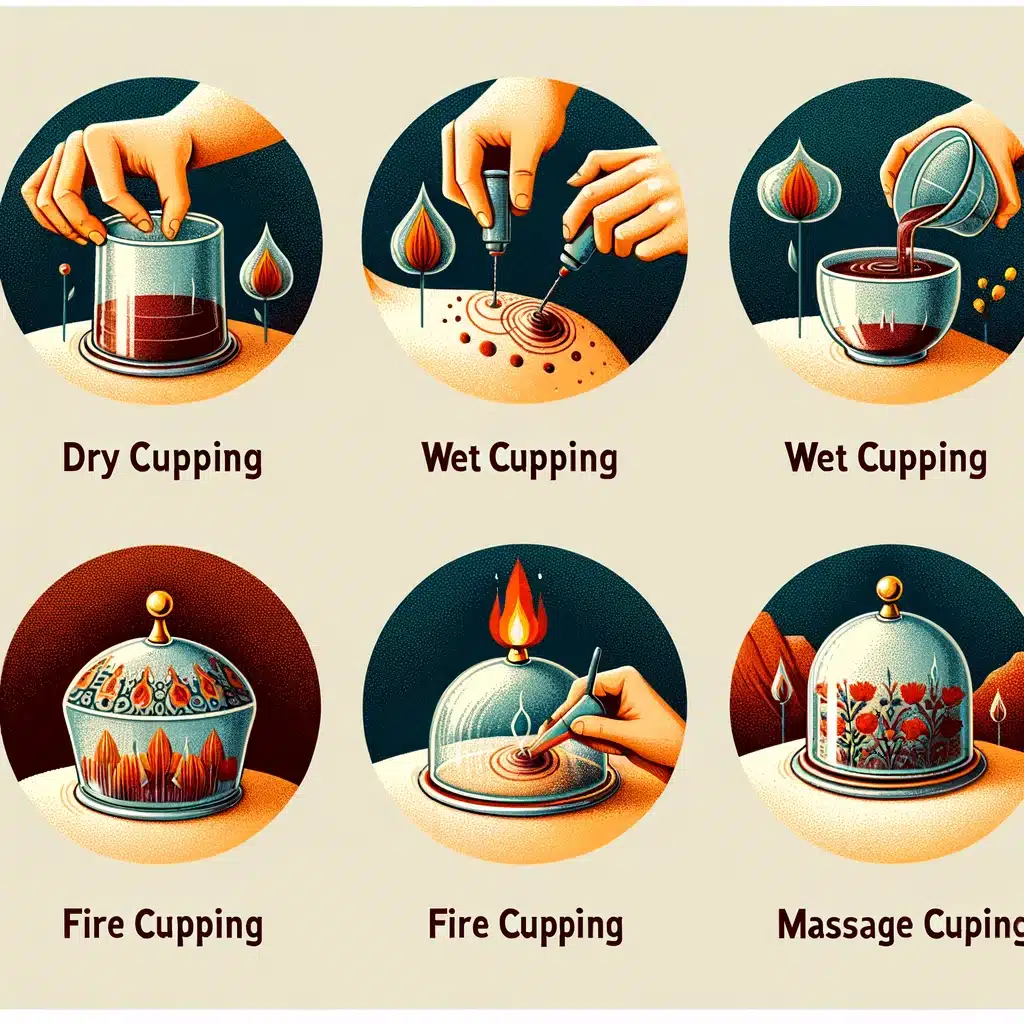
Technique and Application:
- Placement and Duration: Cups can be placed on various points on the body, depending on the condition being treated, and are left in place for a few minutes up to 20 minutes.
- Frequency of Treatment: Depending on individual health goals, cupping sessions can range from once a week to once a month.
- Combining with Other Therapies: Cupping is often used in conjunction with other treatments like acupuncture, massage therapy, and physical therapy to enhance therapeutic effects.
By offering a comprehensive view of the types of cupping and their applications, this section will provide readers with a clearer understanding of what to expect from a cupping therapy session and how to choose the method that best fits their health needs.
The Science Behind Cupping
While cupping therapy is steeped in tradition, it has also been the subject of scientific scrutiny. This section of the blog post will explore the current understanding of how cupping therapy works and what research has to say about its effectiveness.
Mechanism of Action:
- Vacuum Effect: Cupping creates a vacuum that lifts the skin and tissue, leading to increased blood flow to the area.
- Healing Response: This blood flow can promote tissue repair and cell growth, reduce muscle tension, and enhance circulation.
- Detoxification: Some theories suggest cupping releases toxins from the tissues, which are then eliminated naturally by the body.
Evidence-Based Benefits:
- Pain Relief: Several studies indicate cupping can significantly reduce pain in conditions like lower back pain, neck pain, and arthritis.
- Sports Recovery: Athletes have reported faster recovery from muscle soreness and injury when cupping therapy is added to their routine.
- Respiratory Conditions: Some research suggests cupping can benefit those with respiratory diseases by promoting lung function and reducing symptoms.
Skepticism and Critiques:
- Need for More Research: Critics argue that more rigorous, high-quality studies are needed to fully understand the benefits of cupping.
- Placebo Effect: Some skepticism surrounds the effectiveness of cupping, attributing improvements to the placebo effect rather than the actual therapy.
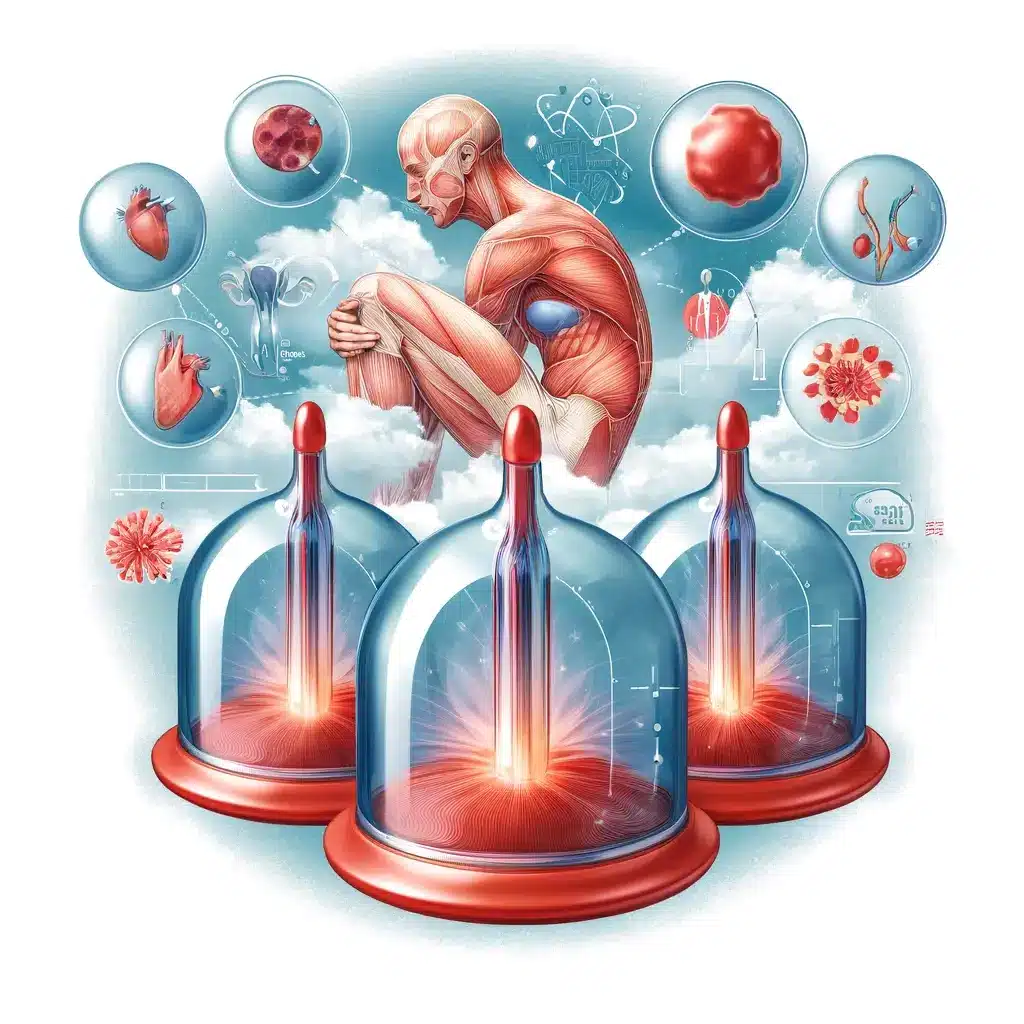
By examining both the supportive evidence and the skepticism surrounding cupping, this section will provide readers with a balanced view, enabling them to make informed decisions about the role of cupping in their healthcare regimen.
Cupping for Prostate Health
Cupping therapy is considered by some practitioners to be beneficial for prostate health, though it is always recommended to use such alternative treatments in conjunction with conventional medicine and under the guidance of healthcare professionals.
Role in Prostate Health:
- Improving Circulation: Cupping is believed to improve circulation in the pelvic region, which could potentially benefit prostate health by promoting oxygen and nutrient delivery to the tissue.
- Reducing Inflammation: The therapy might help reduce inflammation in the prostate area, which is a significant factor in conditions like prostatitis.
Complementary to Medical Treatments:
- Supportive Care: While not a substitute for medical treatment, cupping may be used as a complementary approach to support overall prostate health.
- Lifestyle Integration: Alongside cupping, lifestyle changes such as diet, exercise, and stress management are crucial for maintaining a healthy prostate.
Evidence and Research:
- Clinical Studies: The blog post will discuss any existing clinical studies that have explored the effects of cupping on prostate health and highlight the need for further research in this area.
Cautions for Patients:
- Professional Consultation: Patients with prostate conditions should consult with their doctors before starting cupping therapy to ensure it’s safe and appropriate for their specific situation.
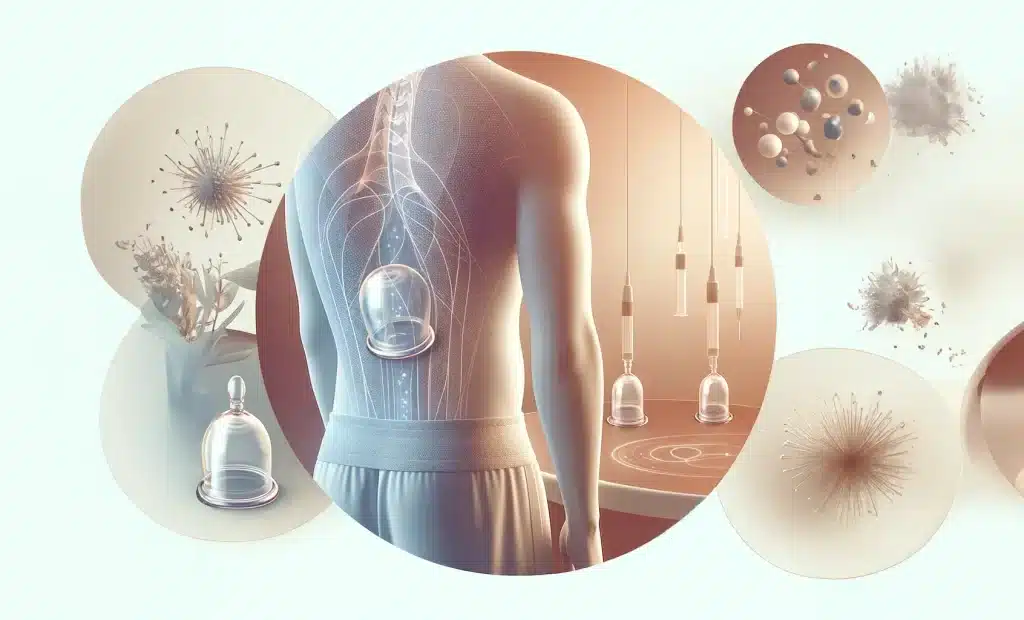
This section will offer readers an understanding of how cupping therapy could potentially contribute to prostate health and emphasize the importance of an integrated approach to treatment.
Cupping for Breast Health
Cupping therapy is sometimes used as part of a holistic approach to breast health. This section explores its potential benefits, backed by traditional uses and ongoing research.
Potential Benefits for Breast Health:
- Enhancing Circulation: Cupping may improve blood flow to breast tissue, which is thought to promote cellular health and potentially reduce the risks of diseases.
- Lymphatic Drainage: By stimulating the lymphatic system, cupping could help in the detoxification process, crucial for removing toxins from breast tissue.
- Reducing Pain and Swelling: Women experiencing pain and swelling, particularly those with fibrocystic breasts, may find relief through the gentle suction of cupping, which can ease congestion and promote healing.
Integrating Cupping with Conventional Care:
- Complementary Therapy: It is important to note that cupping should be used as a complementary therapy and not as a replacement for conventional medical treatments for breast diseases.
- Consultation with Healthcare Providers: Always advise consultation with a healthcare provider to ensure that cupping is safe and appropriate, especially for individuals with specific breast health concerns.
Research and Considerations:
- Evidence Basis: The section will review any available research regarding the efficacy of cupping for breast health and discuss the scientific community’s perspective on its therapeutic value.
- Safety Measures: Highlight the importance of proper technique and hygiene practices in cupping to avoid any potential skin irritations or infections.
This section aims to provide readers with a well-rounded view of how cupping might contribute to breast health, emphasizing safety and the importance of integrating traditional therapies with modern medical advice.
Cupping and Cardiovascular Health
Cupping therapy is often considered for its potential benefits on cardiovascular health, especially in terms of improving circulation and reducing blood pressure. This section will delve into how cupping might influence the cardiovascular system and the evidence supporting these claims.
Benefits of Cupping for Cardiovascular Health:
- Enhanced Circulation: Cupping is believed to increase blood flow, which can help in reducing blood pressure and improving overall heart health.
- Stress Reduction: By promoting relaxation and reducing stress, cupping may help lower blood pressure, a significant risk factor for heart disease.
- Detoxification Effects: Although indirect, the improved circulation from cupping could assist in the removal of toxins that might affect heart health.
Evidence and Research:
- Scientific Studies: Summarize findings from studies that have explored the effects of cupping on hypertension and other cardiovascular conditions.
- Expert Opinions: Include perspectives from healthcare professionals on the efficacy of cupping as part of a cardiovascular health regimen.

Integrating Cupping with Conventional Heart Treatments:
- Complementary Approach: Discuss how cupping can be used alongside traditional medical treatments for heart conditions, emphasizing that it should not replace them but rather complement them.
- Patient Considerations: Highlight the importance of patients with cardiovascular issues consulting their healthcare providers before beginning cupping therapy.
This section aims to provide a comprehensive overview of the potential cardiovascular benefits of cupping therapy, supported by research and clinical insights.
Managing Sciatica with Cupping
Sciatica can be a debilitating condition characterized by pain that radiates along the path of the sciatic nerve, which extends from the lower back down through the hips and legs. Cupping therapy is increasingly being considered as a potential treatment to relieve some of the symptoms associated with sciatica.
How Cupping Helps with Sciatica:
- Pain Relief: The suction created by the cups can help reduce muscle tension and promote blood flow, which may alleviate the pain associated with sciatica.
- Reducing Inflammation: By enhancing circulation and encouraging the flow of fresh blood to the affected areas, cupping can help reduce inflammation that contributes to sciatica pain.
- Stimulating Healing: The increased blood flow can also promote healing of the nerves and muscles along the sciatic pathway, potentially speeding up recovery.
Evidence and Application:
- Clinical Evidence: While research on cupping for sciatica is still emerging, some studies suggest that it can be an effective treatment for reducing pain intensity and improving quality of life in people with sciatica.
- Treatment Protocol: Typically, cupping for sciatica involves placing cups along the lower back and affected leg areas, where the sciatic nerve is most impacted.
Integrating Cupping with Other Treatments:
- Holistic Approach: Cupping is often used in conjunction with other therapies such as physical therapy, acupuncture, and regular exercise to provide comprehensive relief from sciatica.
- Consultation with Healthcare Providers: It is crucial for patients to consult with their healthcare providers to tailor a treatment plan that is safe and effective, especially for conditions like sciatica.
This section aims to provide readers with an understanding of how cupping can be part of a broader treatment plan for sciatica, supported by both traditional use and some scientific research.
Cupping as a Preventive Therapy
Cupping therapy is not only used for treating specific ailments but is also increasingly recognized for its potential in preventive care. This section will explore how regular cupping sessions can contribute to overall health maintenance and prevent various health issues.
Preventive Benefits of Cupping:
- Boosting Immune Function: Regular cupping sessions are believed to enhance the immune system by improving lymphatic circulation, which helps the body fight off infections more effectively.
- Stress Reduction: The relaxation effects of cupping can significantly reduce stress levels, which is crucial since chronic stress is a risk factor for many health conditions.
- Enhancing Circulation: Improved blood flow from cupping can contribute to better oxygen and nutrient distribution throughout the body, supporting overall cellular health and function.
Lifestyle Integration:
- Routine Practice: Incorporating cupping into a regular wellness routine can help maintain its preventive benefits, much like regular exercise or a balanced diet.
- Complementary to Other Health Practices: Cupping works best when combined with other healthy lifestyle choices, such as a nutritious diet, regular physical activity, and adequate sleep.
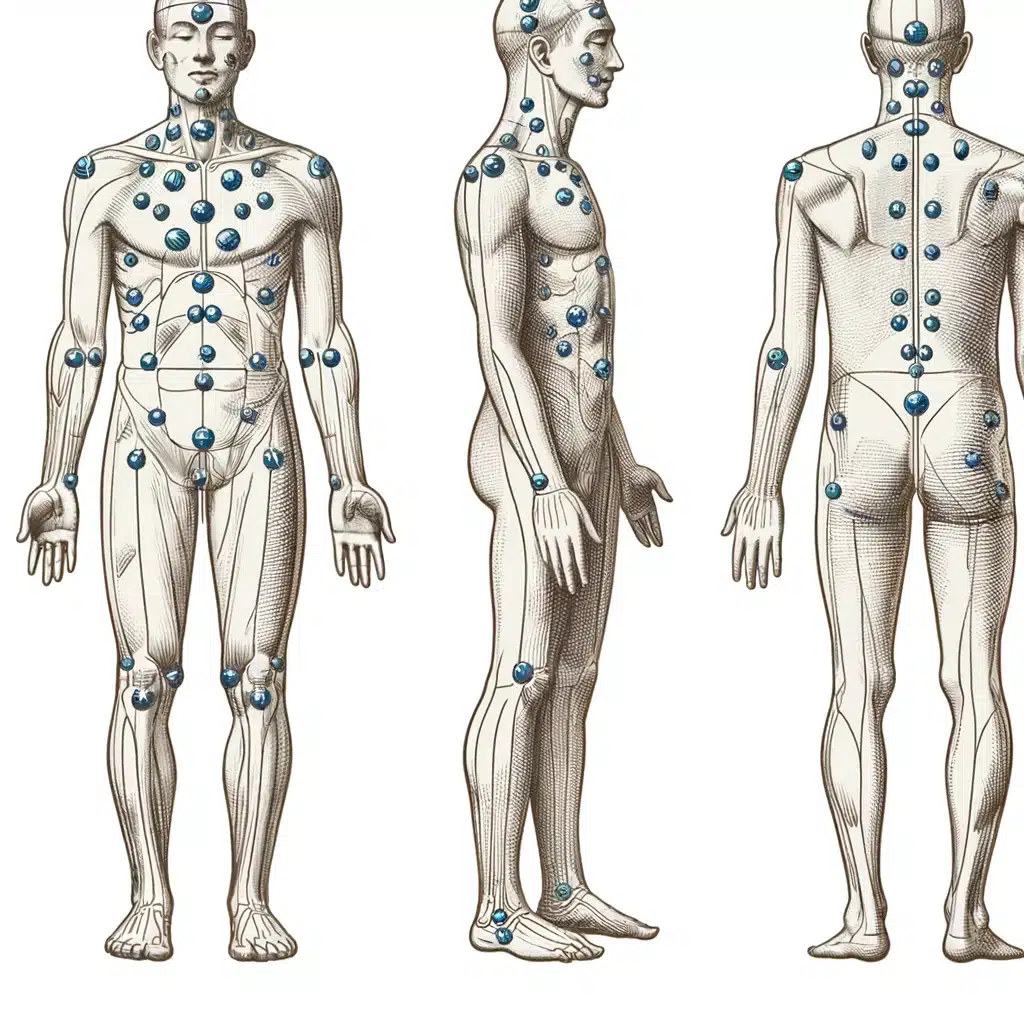
Considerations for Preventive Cupping:
- Frequency of Sessions: The ideal frequency of cupping sessions for preventive purposes can vary based on individual health goals and conditions. It’s generally recommended to have sessions spaced out over weeks or months.
- Consultation with Professionals: Always consult with healthcare professionals to tailor a cupping regimen that suits individual health needs and complements other medical treatments or lifestyle adjustments.
This section aims to provide an understanding of how cupping can be more than just a treatment—it can be a proactive approach to enhancing and maintaining health.
Lifestyle Changes to Complement Cupping
Incorporating cupping therapy into a broader lifestyle strategy can significantly amplify its health benefits. This section will explore key lifestyle changes that synergize with cupping to promote overall well-being.
Dietary Adjustments:
- Anti-Inflammatory Foods: Emphasize a diet rich in anti-inflammatory foods like turmeric, ginger, berries, and leafy greens, which can enhance the effects of cupping on reducing inflammation.
- Hydration: Increasing water intake before and after cupping sessions helps the body detoxify more effectively, supporting the therapy’s purifying effects.
Regular Physical Activity:
- Exercise Compatibility: Engaging in regular exercise, especially yoga and stretching routines, can complement the flexibility and pain relief benefits of cupping.
- Post-Session Activity: Light to moderate activity after cupping can help maintain the increased circulation initiated by the therapy.
Stress Management Techniques:
- Mindfulness and Relaxation: Practices like meditation, deep breathing, and mindfulness can reduce stress and enhance the relaxation effects of cupping.
- Consistent Sleep Patterns: Establishing a regular sleep schedule enhances recovery and maximizes the therapeutic benefits of cupping.
Avoiding Harmful Habits:
- Smoking and Alcohol: Reducing or eliminating smoking and excessive alcohol consumption can improve overall health outcomes from cupping by enhancing body recovery and immune function.
This section aims to provide readers with practical advice on how to create a holistic health regimen that includes cupping and lifestyle adjustments, facilitating a more comprehensive approach to wellness.
Potential Risks and Side Effects of Cupping
While cupping therapy is generally considered safe when performed by a trained professional, it is important to be aware of possible risks and side effects to ensure informed decisions.
Common Side Effects:
- Bruising and Discomfort: The most common side effect of cupping is bruising at the site of the cup. While usually harmless, these bruises can sometimes be uncomfortable.
- Skin Irritation: Especially for those with sensitive skin, cupping can cause mild to moderate skin irritation.
- Temporary Soreness: Similar to what one might experience after intense exercise, soreness after cupping is common and typically subsides within a few days.
More Serious Risks:
- Infection: If cups are not sterilized properly or if the skin is broken during wet cupping, there is a risk of infection.
- Scarring: Rarely, more aggressive cupping can lead to scarring on the skin.
- Burns: In fire cupping, there is a small risk of burns if the procedure is not conducted properly.
Safety Precautions:
- Professional Guidance: Always seek treatment from a certified and experienced therapist who uses sterile equipment and follows proper safety protocols.
- Medical Consultation: It’s advisable to consult with a healthcare provider before beginning cupping therapy, especially for individuals with underlying health conditions like skin disorders or blood clotting issues.
Conclusion: Embracing Cupping Therapy with Informed Confidence
Cupping therapy has been embraced across various cultures for centuries, not just as a remedy for specific ailments but also as a preventive measure to maintain overall wellness. This article has explored the diverse applications of cupping therapy, from enhancing circulation and managing pain to supporting the treatment of chronic conditions like sciatica and improving cardiovascular health.
Key Takeaways:
- Holistic Health Support: Cupping can be a valuable addition to a holistic health strategy, potentially offering benefits like reduced pain, improved immunity, and better stress management.
- Complementary Therapy: While effective on its own, cupping is best used in conjunction with other treatments and lifestyle changes, such as a balanced diet and regular exercise, to maximize health outcomes.
- Informed Use: Awareness of the potential risks and side effects associated with cupping, as well as the importance of seeking treatment from qualified professionals, is crucial for safe practice.
Encouragement to Readers: We encourage readers to consult with healthcare providers to tailor a cupping regimen that aligns with their specific health needs and conditions. Embracing cupping therapy with informed confidence can lead to significant health benefits and contribute to a more balanced and healthful life.
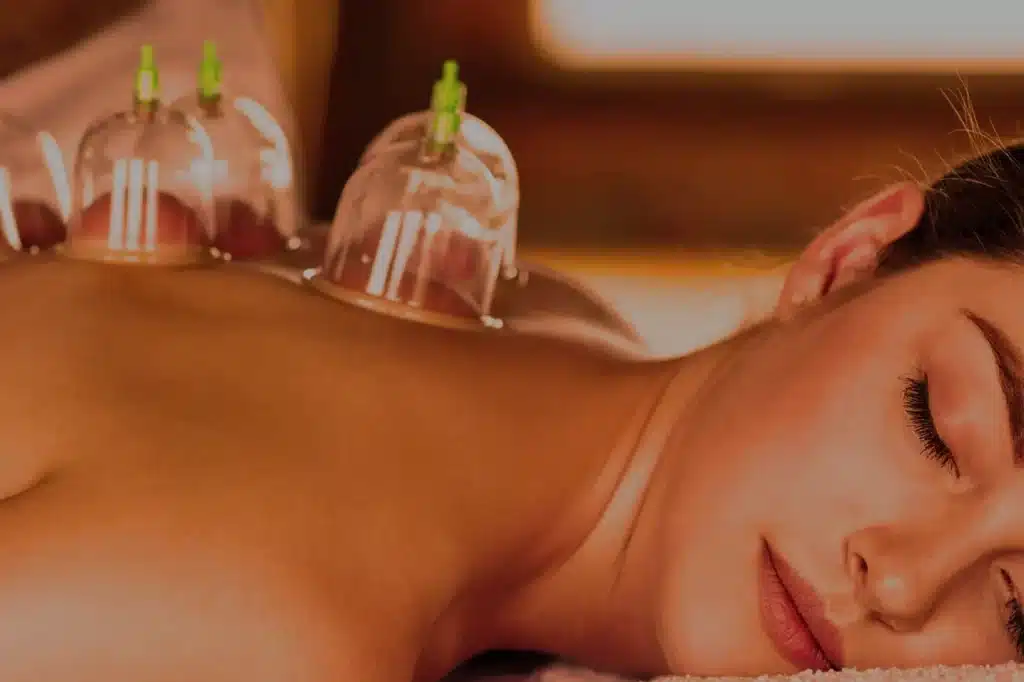
Call to Action:
Consider exploring cupping therapy by consulting with a certified practitioner who can provide personalized advice and treatment plans. Whether you are seeking relief from chronic pain or looking to enhance your overall health regimen, cupping may offer the supportive care you need.
Ressources
- Frontiers in Medicine provides an evidence-mapping study that outlines the efficacy of cupping therapy on pain outcomes, discussing various clinical research progress and physiological mechanisms. This study can give you a thorough overview of how cupping is viewed from a clinical perspective (Frontiers in Medicine).
- JCM (Journal of Clinical Medicine) discusses an evidence map of cupping therapy, presenting a visual overview of the research volume and findings related to conditions such as low back pain, knee osteoarthritis, and more. This is helpful for understanding the breadth of conditions cupping is purported to benefit (JCM on MDPI).
- Everyday Health outlines possible health benefits of cupping therapy, including significant reduction in pain, improvement in function, and a better quality of life for individuals with neck pain. It also mentions benefits for other conditions like headaches, migraines, and carpal tunnel syndrome, providing a practical look at what cupping can potentially address (Everyday Health).
- Cleveland Clinic discusses cupping therapy’s potential benefits such as reducing pain and inflammation, improving blood flow, and increasing range of motion. It also highlights the risks or complications of cupping, such as bruising, burns, or in rare cases, vasovagal syncope, which is important for assessing the therapy’s safety (Cleveland Clinic).


0 thoughts on “Discover the Secrets of Cupping:Enhance Your Wellbeing”